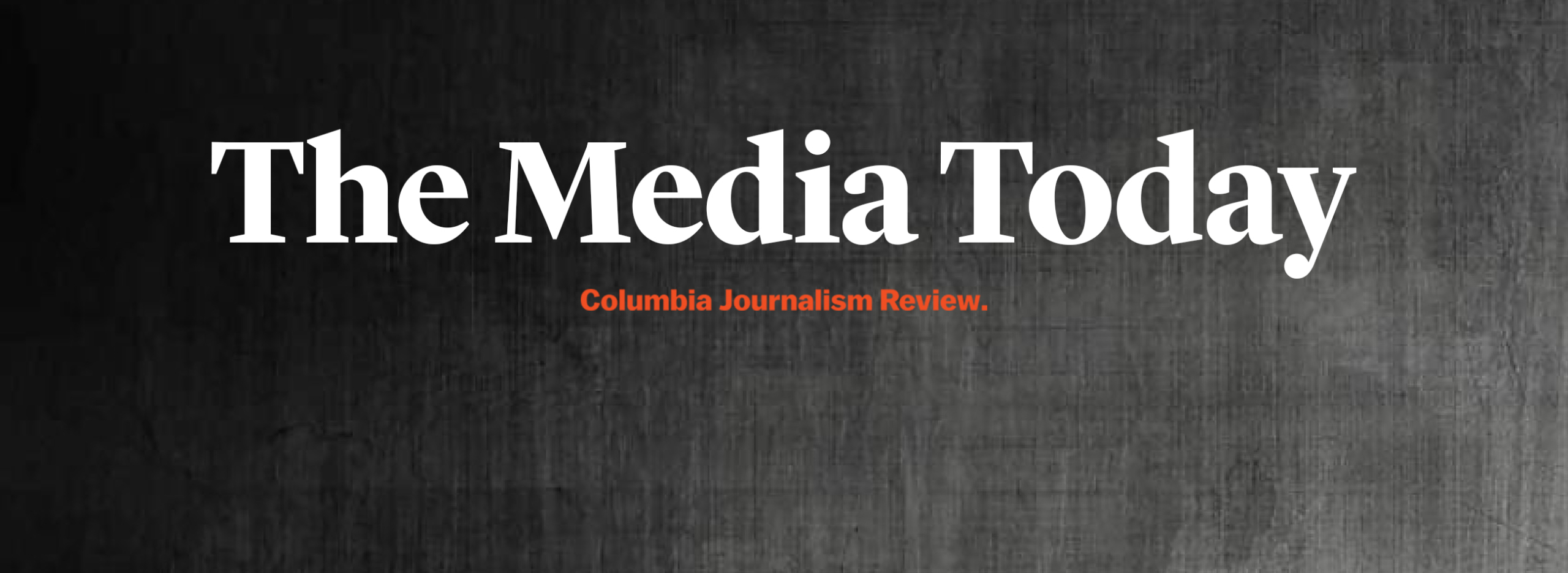Sign up for the daily CJR newsletter.
IN 2013, MEDIUM SEEMED to have a bright future. It was founded by Evan Williams, a co-founder and former chief executive of Twitter, and also a co-founder of Blogger, one of the first self-publishing platforms during the early days of the social web. When Twitter went public in 2013, Williams’ stake gave him a net worth of almost $2 billion. And he made it clear he intended to reinvent publishing and possibly journalism, by giving writers a way to publish their work easily. The company has stumbled a number of times on the way towards realizing that dream, however: it has hired editors and writers and encouraged publications to move onto its platform, only to yank the financial rug out from under them—not just once, but multiple times.
This week, it announced another pivot that calls into question the future of the publications it launched with much fanfare two years ago. Williams announced in an email to staff on Tuesday that the company is changing its editorial strategy to focus on finding and developing new and promising writers from the pool of users who publish using its platform. He also announced a voluntary severance program for staff who “would rather get off this crazy ride,” which offers a lump sum of five months’ salary and six months worth of health benefits. According to The Information, the company told employees the buyout plan came about as a result of a recent union drive, which fell short of certification by one vote. What is to become of Medium’s existing magazines, including the tech-focused site OneZero, and Zora, which is focused on telling the stories of Black women, is unclear. Williams is vague on that point, saying only that “it will take a lot more experimentation to figure out what their role is.”
Medium staffers say it’s not clear what the Williams email means for them or their future. When it launched its owned-and-operated magazines, Medium gave staffers lots of resources and editorial independence, and allowed editors to commission freelancers at relatively high rates. The bet seemed to be that high-quality content from professionals would buttress the user-generated content coming in from the platform. That clearly hasn’t panned out, however. Freelance rates have reportedly plummeted, and there seem to be few signs of warmth towards the company’s journalists, especially from Medium’s founder. But many feel they have little choice but to stick it out, since other media outlets are just as bad, if not worse.
ICYMI: Covering the Atlanta massacre from inside the Korean community
According to Williams, the platform is growing strongly when it comes to subscribers, but “what’s worked less well is where we’ve followed the traditional editorial playbook — specifically, commissioning stories from professional writers into publications with broad mandates.” Medium has published “many stellar stories that found a wide audience and more than paid for themselves,” he said. “But our hit rate has been low, and we’re not near where we need to be to make it work economically.” Although Williams is a billionaire, and could likely afford to fund Medium out of his own pocket, the company took the traditional Silicon Valley route and raised a lot of venture capital—a total of $132 million as of its last round—and presumably needs to meet financial targets. That kind of pressure that has led to layoffs and even outright closure at other VC-based companies including BuzzFeed, Mic, and others.
At this point, Medium’s history of pivots seems to include almost every digital business model the journalism industry has tried over the past two decades: It started as a platform for individuals, then created publications and convinced publishers to move to its platform. It has tried different payment schemes, including payment based on traffic, and membership programs, which it abruptly shut down, driving many partners away. And it has tried to build or buy franchises that could monetize via ads (at one point Williams talked about buying New York magazine), but that didn’t work either. Finally, it tried to launch publications like OneZero based on subscriptions, and now that seems to have a questionable future.
The end result of all the pivoting is that Medium seems to be returning to a variation of the model it started with in 2013: finding writers from the pool of users, and helping them monetize their content — a model very similar to the one Substack uses for its subscription newsletter business. Will this one stick, or will there be yet another pivot?
Here’s more on Medium:
- Dysfunctional: Casey Newton, who writes a Substack newsletter called Platformer, spoke with 14 current and former staffers at Medium about the changes Williams announced, and about his management style. The company is on track to make $32 million in revenue this year, according to two sources Newton spoke to, but that’s not much when you have raised $132 million and are supposed to be worth $600 million. “He keeps talking like this company founded in 2012 is a brand new startup finding its way,” one staffer said. “At a certain point you’re not nimble and iterating. You’re just floundering and failing to follow through and execute.”
- Rug pulling: In 2017, Medium shut down its hosted publication unit, while some of its partners—like The Establishment, an independent magazine—were still in the process of moving their operations to the platform. “I remember raising the issue” of all the previous pivots the company has been through, cofounder Kelley Calkins told the Poynter Institute at the time. A representative from Medium assured her the company was committed to the strategy. The announcement of the shut down came “literally as we were switching over our URLs” to Medium, Calkins said. “Initially, it was a lot of swearing. Then came the tears. And the cheap beer.”
- Writers or no? In an essay published in 2018, Williams said that the company was all about curating content from users who published on the platform. “We have no writers on staff and don’t plan to add any,” he said. A year later, he said the company wanted to create its own publications: “We are seeking partners to create new publications, which we will help fund and distribute. If you are a current (or aspiring) editor-in-chief… or an existing publisher with extra capacity, we’d love to hear from you.” Nieman Journalism Lab said: “Fool me once, shame on you. Fool me twice, shame on me. Fool me seven times, well…how much money do you have, again?”
Other notable stories:
- Joe Pompeo of Vanity Fair writes that the search for a replacement for Washington Post executive editor Marty Baron is heating up. The most talked-about candidate, Kevin Merida, isn’t on the short list, he says, although a trio of New York Times editors are. The union also wants a bigger stake in the process, according to Pompeo, and there’s potentially a major wild card–the Post’s owner Jeff Bezos, and whether he has his own candidate in mind.
- Maryland businessman Stewart Bainum Jr. has offered $650 million for Tribune Publishing, but the Chicago-based newspaper company’s board endorsed a $630 million offer from Alden Global Capital instead, according to a report in The Baltimore Sun, which is owned by Tribune. One reason they did so is that Bainum still has to raise financing for his offer, and the board gave him time to try to do so, but also recommended that shareholders approve the Alden Global offer.
- The Los Angeles Times has received a $10 million loan through the federal Paycheck Protection Program to cover payroll and other employee-related costs amid a plunge in advertising revenue, the Times reported Tuesday. The COVID pandemic hit the paper when it was already strained as a result of what the report calls “an unprecedented rebuilding effort and hiring spree” that began in 2018 after biotech billionaire Dr. Patrick Soon-Shiong and his wife, Michele, purchased The Times and the San Diego Union-Tribune for $500 million from Chicago-based Tribune Publishing.
- Facebook chief executive Mark Zuckerberg will tell Congress during a hearing today his plan for reform of Section 230, the clause in the Communications Decency Act that protects platforms from liability for the content they host. In written testimony ahead of the hearing, which will also include the chief executives of Google and Twitter, Zuckerberg suggests making Section 230 protections for certain types of unlawful content conditional on the platforms’ ability to meet best practices to fight the spread of the content. “Platforms should be required to demonstrate that they have systems in place for identifying unlawful content and removing it,” he writes.
- BuzzFeed has named Danielle Belton as the new editor-in-chief of HuffPost on Wednesday. Belton, who has been editor-in-chief of The Root for five years, will report to Mark Schoofs, the editor-in-chief of BuzzFeed News. BuzzFeed acquired HuffPost from its former owner Verizon in February, and subsequently laid off 47 of its employees. The editor-in-chief job at HuffPost has been vacant since the previous editor, Lydia Polgreen, left for Gimlet Media last March.
- Kevin Roose, a columnist with the New York Times, writes about NFTs, or “non-fungible tokens,” a form of cryptocurrency investment that ties a one-time token to an existing object. And his column about the phenomenon is also available for purchase as an NFT, he says. “Normally, I’m not allowed to make sales pitches in my columns. But this time is an exception, because what’s for sale is the column itself. That’s because I’ve decided to enter the freewheeling world of nonfungible tokens, or NFTs, the newest frontier in the cryptocurrency gold rush.”
- Coverage of the COVID pandemic by US publications with a national audience has been much more negative than coverage by any other source, including scientific journals, major international publications and regional US media, according to a report in the New York Times based on newly released research. “The most well-read U.S. media are outliers in terms of their negativity,” said Molly Cook, a co-author of the study. About 87 percent of COVID coverage in national US media last year was negative, compared with 51 percent in international media. Coverage was negative in both US media outlets with liberal audiences and those with conservative audiences.
- Staff at MEL magazine were all laid off on Wednesday and the site’s owner—men’s grooming company Dollar Shave Club—said it is looking for a buyer, and if it can’t find one the site will be shut down permanently. “This has always been a part of the plan for our brand-backed partnership,” editor-in-chief Josh Schollmeyer said in a Twitter thread. MEL was founded in 2015 and won acclaim for going beyond the traditional men’s fitness and health topics such sites usually offer, and writing about subjects like toxic masculinity, and the black market for counterfeit Viagra.
ICYMI: Another day, another mass shooting
Has America ever needed a media defender more than now? Help us by joining CJR today.







